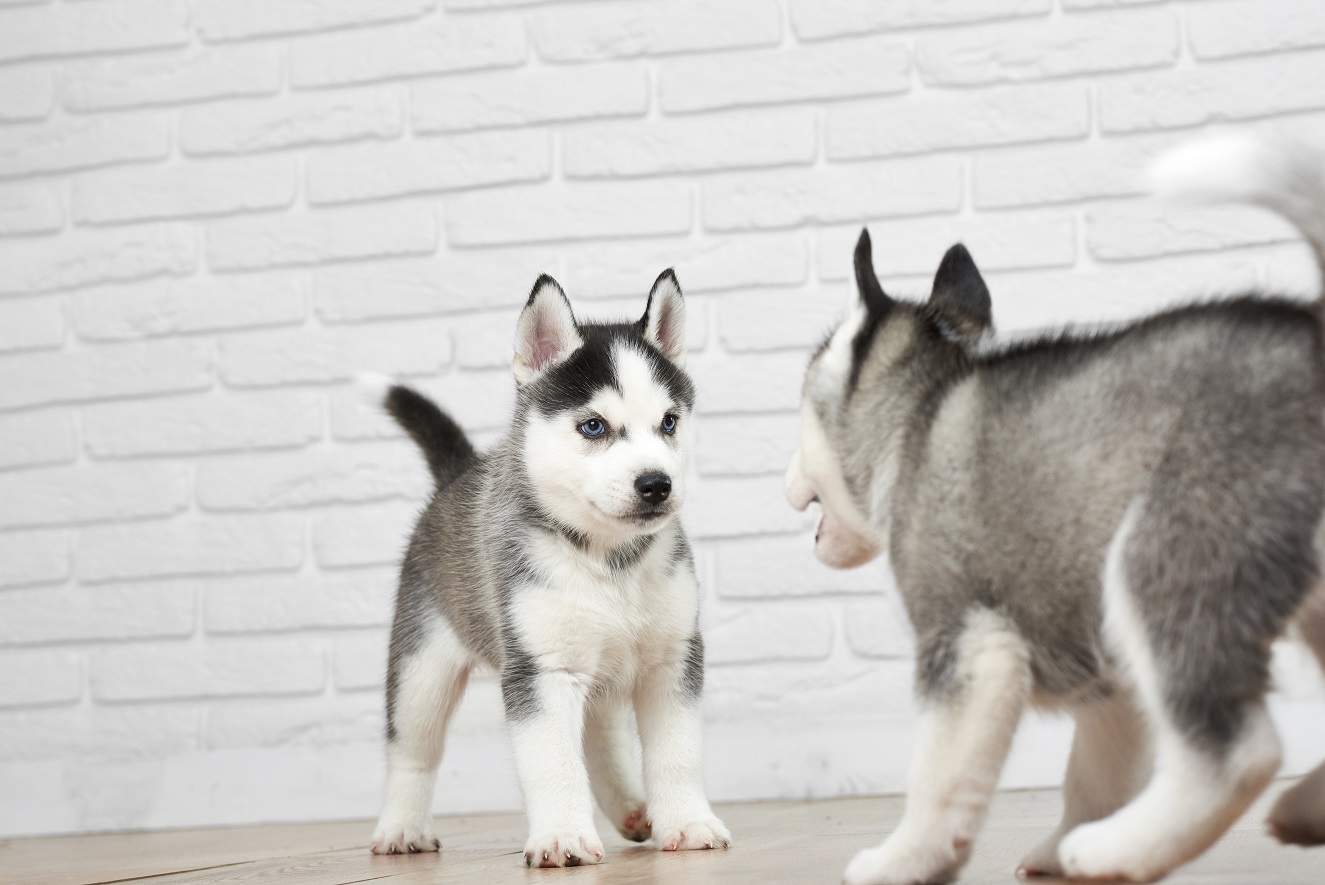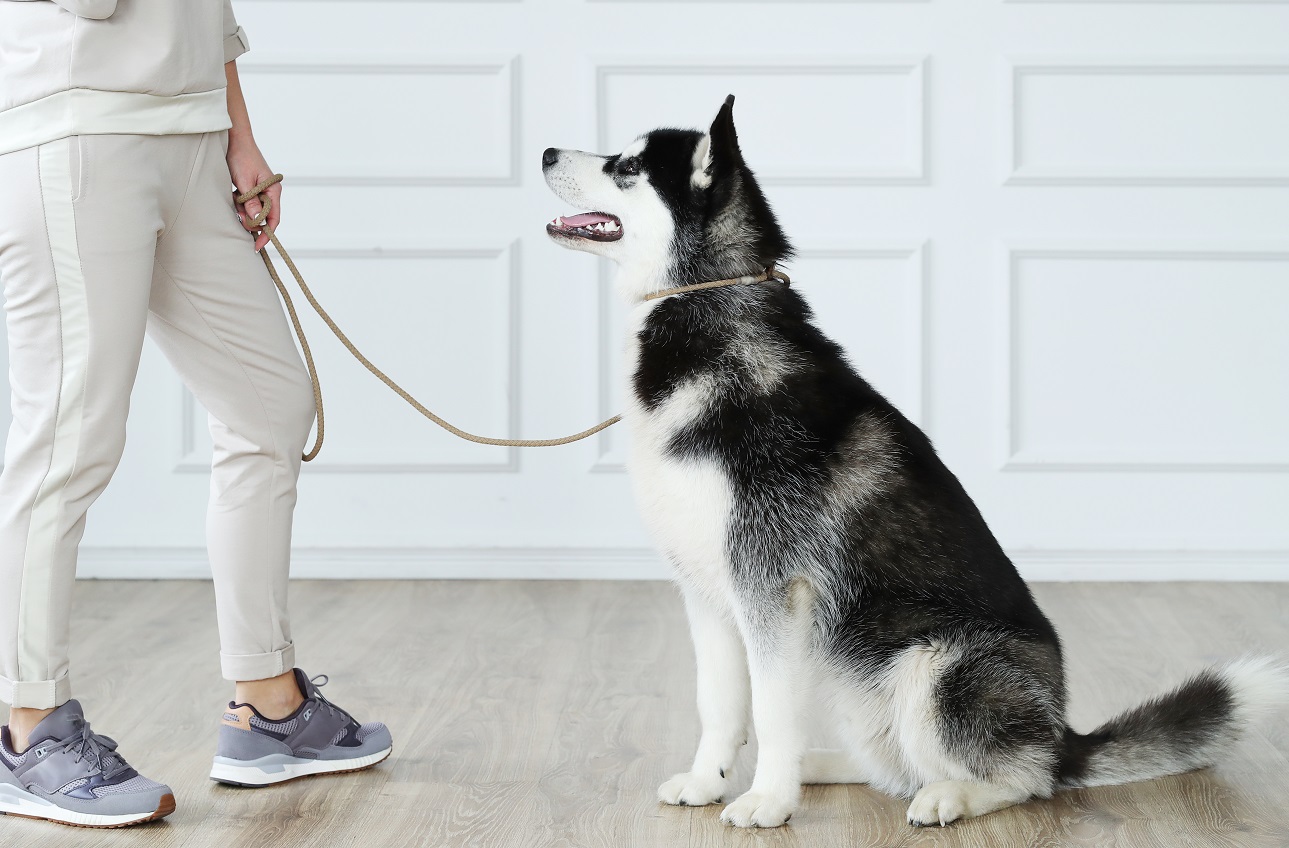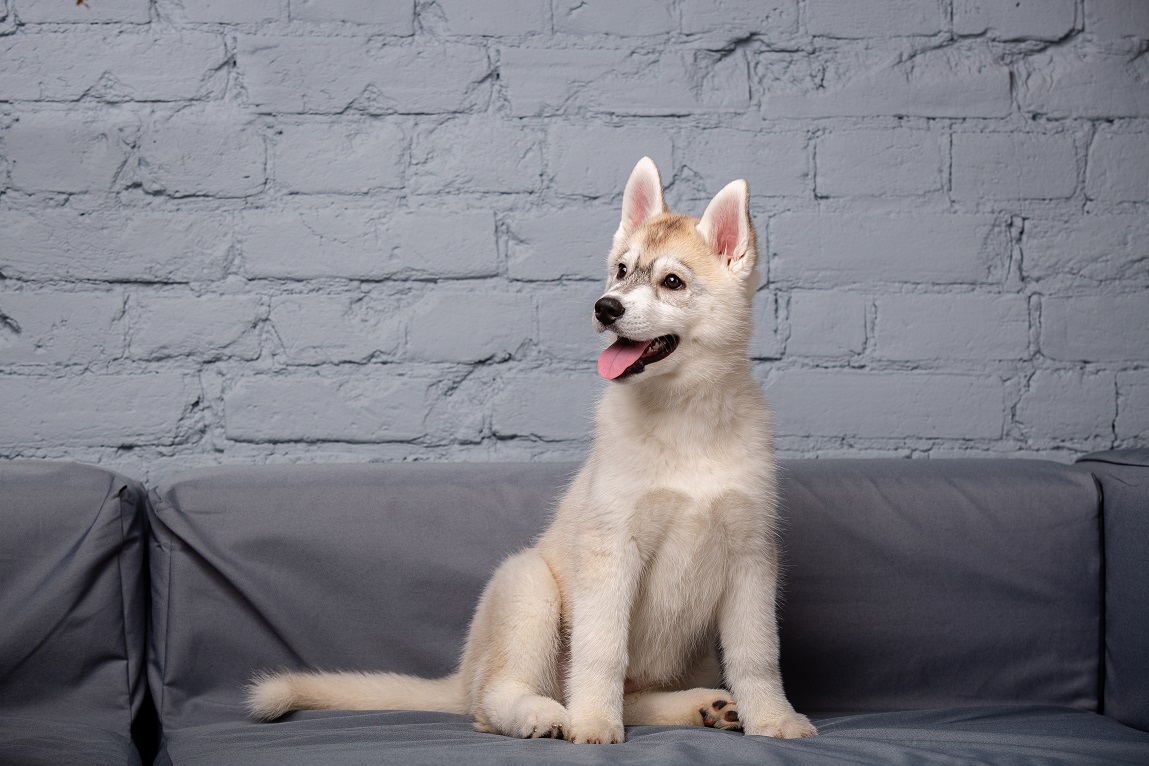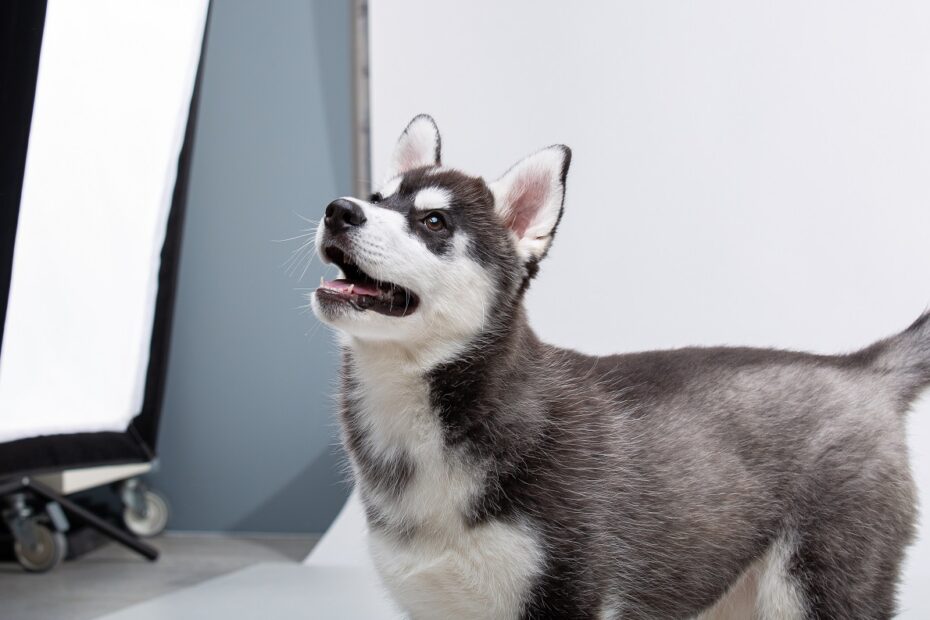An aggressive Husky isn’t something you come across every day.
Although they can be rowdy and boisterous (especially as pups), Huskies aren’t a breed that’s naturally given to aggression.
Does that mean it can’t happen?
…Of course not.
The truth is, a well-trained, well-socialized Rottie is going to be a lot less trouble than a badly trained, poorly socialized Retriever.
Ultimately, all dogs have the potential to display unwelcome behaviors, and all dogs have the potential to be civilized companions. It all comes down to personality, and like it or not, we’re the ones responsible for shaping and informing that personality.
You need to understand that dogs are complex. They don’t think the same as us, and they don’t do things for the same reasons as us.
So judging their behavior through a human lens won’t tell you anything. Neither will tarring all undesirable behavior with the same brush.
A dog that displays aggressive behavior under certain situations isn’t necessarily an aggressive dog. They’re just a dog that’s reacting and behaving in an instinctual way to a specific stimulus.
However if you can figure out what triggers the behavior, you can work on addressing their reaction and moving past it.
Fortunately, there’s a way you can get things off to a flying start.
It’s called “My Everyday Dog Training Tools”, and it’s a short PDF guide that’s been specially put together by Dan Abdelnoor over at the Online Dog Trainer to help any dog calm down, focus, and take control of their emotions.
For an independent, headstrong dog like the Husky, it’s invaluable. Use it in conjunction with some of the other training strategies I’ll discuss shortly, and the results will soon start speaking for themselves.
Here’s the link to take a look: Click Here To Grab Your FREE Copy Of My Everyday Dog Training Tools & Discover How To Finally Stop Your Husky’s Frustrating Aggressive Behavior… Even If You’ve Tried & Failed Before!

Why Is My Husky So Aggressive?
When we think of aggression, we tend to think of it as one generalized thing.
The truth is, aggression comes in various forms.
For example, some dogs might be territorial or dominant, others might be possessive or fearful. So working out what trait is to blame for your own dog’s behavior is the first step in addressing it.
Take a look at some of these common causes of aggression.
Do any sound like they might apply in your Husky’s case?
Lack of Exercise
What seems like aggression can sometimes be nothing more than exuberance.
Huskies were bred to pull sleds through miles of snow. You don’t get to do that if you’re a lazy couch potato who prefers snoozing on the sofa to jogging outside.
The sleds might have gone, but the energy is still there. Deprive them of the proper outlet for it, and sooner or later, it’s going to bubble up in the kind of hyper, rowdy behavior that can easily be mistaken for aggression.
Lack of Socialisation
Not all dogs are social butterflies by nature. If they aren’t exposed to various animals, people, sounds, and sights from a young age. All of those things can become a source of fear and anxiety as they mature.
The problem is, fear and anxiety can often manifest themselves in aggressive behavior.
If your dog comes across a situation that scares them and makes them feel threatened, they’ll usually try to escape.
If they can’t, they may lash out instead.
Territorial Instincts/ Possessivness
Huskies are territorial by nature. If they think the house, the yard, their food, their toys, and even their family are their personal property, they’ll guard them ferociously.
Whereas other dogs might bark at anyone who threatens their possessions, Huskies rarely do.
Instead, they use their body to assert dominance. Which usually involves making themselves look as big and menacing as possible.
If the person or animal ‘threatening’ their property doesn’t get the message and back off, things can quickly escalate into an all-out war.
Dominance
Dominant dogs like to feel in charge at all times. They’re likely to ignore your instructions and will resist any attempts you make to impose some kind of control over them.
Snaping, growing, biting, and mounting other dogs and people are all ways a dominant dog will try to exert their authority.
To rub salt in the wound, a dominant Husky is also more likely to be protective of their belongings and their status. So you can expect plenty in the way of possessive and territorial aggression to boot.
Prey Drive
Like many working dogs, Huskies have an incredibly strong prey drive. If they see or hear small animals or little kids playing, their instincts can go into overdrive.
Even generally well-behaved Huskies can sometimes display aggressive behaviors around smaller creatures, especially if they haven’t been socialized to become accustomed to them.

How to Calm an Aggressive Husky
Depending on the cause of your Husky’s aggression, there are several highly effective strategies you can use to manage the behavior.
Some of them might mean changes for your dog, others might mean changes for you.
Either way, they all have one thing in common – they’re all going to work much better if your dog is calm, controlled, and collected.
If that sounds a big ask, it’s because it is.
But there’s an easy way to do it.
Remember Dan’s book My Everyday Dog Training Tools that I introduced you to a little earlier?
Now would be the time to grab your free copy.
It’ll help set up a new, healthy relationship between you and your dog…
…show them the value of listening to your instructions rather than turning a deaf ear.
..And teach them to remain calm no matter what’s happening around them.
If all your previous training efforts have come to nothing, this could be what you’ve been missing.
Put Your Thinking Cap On
Before you jump into a new training approach with all guns blazing, take a step back. Not every problem is the same, and not every case of aggression will respond to the same solution.
If you can figure out what’s driving your dog’s behavior, you stand a better chance of managing it. Ask yourself what kind of stimuli triggers their aggression.
- Do they get snappy if someone approaches them while they’re eating?
- Do they throw a hissy fit if you try and take their toys away?
- Do they say hello to the mailman with a snarl and a growl?
- Do loud noises or new faces throw them off course?
Be honest about what kind of training and socialization they’ve had, as well as how much exercise and mental stimulation they get on a daily basis.
Remember, this isn’t an exercise in finger-pointing or blame – it’s simply trying to understand exactly what’s causing your Husky to act the way they do so you can start moving forward in a positive way.
Be a Leader
If you’re dealing with a dominant Husky, it’s time to show them who’s wearing the pants in the relationship.
That doesn’t mean being aggressive yourself. Fighting fire with fire doesn’t work -if anything, it’ll only lead to worse problems in the future.
What it does mean is that you need to shake up the dynamic by adopting some strong leadership skills.
Stop playing games like tug of war or anything else in which there’s a clear winner and loser, especially if your dog is stronger than you.
If your dog demands something, get them to obey a command before you give it to them.
Be consistent with your rules and follow through on your commands. Giving in can sometimes feel easier in the short term, but you’re only creating a rod for your back if you do.
Get Them Checked Out
As dogs can sometimes lash out if they’re in pain or injured, it’s worth asking your vet to rule out any health problems.
If they’ve only recently started displaying anti-social behavior, do this as the first port of call. Until they’re diagnosed and treated, no amount of training is going to help the situation.
Get Social
All dogs benefit from socialization, but working dogs like Huskies with strong predatory instincts need it more than most. If they don’t learn how to act around small animals or even little kids, their prey drive will always be a problem.
Although it’s best to start socializing them from a young age, it’s never too late to start.
The ultimate goal is to get them used to every kind of person, animal, and situation they’re likely to come across.
But start small.
Flooding them with too many new experiences at once may just compound any anxieties or fears they already have.
Try setting up some play dates with other pet owners and work up from there.
Keep the introductions gentle, and remember to grease the wheels with plenty of praise and treats.
Related Post: How To Socialize An Aggressive Dog – A Step By Step Guide

Take Them For a Run
Don’t underestimate just how much difference a bit of healthy exercise can make to a dog’s behavior.
A highly energetic breed like the Husky doesn’t just like exercise…
…They need it.
Deprive them of it for too long and too often, and they’ll find all kinds of undesirable ways to express their frustration.
A sedate stroll around the block once a day won’t cut it. Make it a priority to add plenty of runs and games into their day. You could even try signing them up for a coursing or agility class.
If you’re away from home for long stretches of the day, it might be worth asking a friendly neighbor or dog walker to take them for a walk at lunchtime to help break up their day.
Don’t Forget the Training
While you’re working on socializing your dog, get down to some obedience training at the same time.
Teaching basic commands like ‘stay,’ ‘leave,’ and ‘sit’ is simple enough to master. But it will go a long way to bringing your dog’s behavior back under your control.
Remember to use positive reinforcement techniques during your training sessions. Huskies can be stubborn, but a few treats and plenty of praise will help them see the benefit of paying attention.
If you struggle to keep their eye on the prize, the step-by-step training techniques you’ll find in My Everyday Dog Training Tools will do wonders for their focus.
Dial Down the Tension
Controlling the environment of a territorial or possessive dog won’t change their instincts. But it will stop those instincts from becoming a problem.
If you know your dog gets possessive around their toys or food, clear away their bowls and toys before visitors come.
Warn your children never to approach your dog while they’re eating or playing.
If you live in a multi-dog family, make sure to feed them separately.
If your Husky spends all day patrolling the yard or throwing menacing looks at the neighbors through the window, remove their triggers.
Draw the curtains and replace that chain link fence with a solid wood option.
If necessary, put them in a separate area of the house before any visitors arrive.
As I say, these measures won’t stop your dog from being territorial or possessive. But they will at least keep those instincts under control while you work on adjusting them in the long term.
Encourage Emotional Control
Regardless of whether your dog is behaving badly out of frustration, overexcitement, fear, or anything else, teaching them a little emotional control will go a long way to addressing the situation.
My Everyday Dog Training Tools is an easy, highly effective way of bringing your dog’s behavior under control.
Implement the methods and techniques you’ll see, and you soon be looking at a calmer dog with better impulse control and greater focus.
As an added advantage, it’ll set the groundwork for a much healthier relationship between them and you – something that, in the case of dominant dogs in particular, is key to positive change.

Wrapping Things Up
No one wants to see their dog labeled as aggressive. No one wants to be on the receiving end of an aggressive dog’s attention either.
Fortunately, neither is inevitable.
Just because your dog has shown aggressive behaviors doesn’t mean they’re innately aggressive by nature. Or that there’s nothing you can do to manage and control the situation.
If you can figure out the root cause of the aggression, you’re already halfway there.
After that, it’s just a case of matching the solution to the problem.
It may take time, and it’s definitely going to take patience. But with the right combination of training and behavioral modification, very few cases of aggression can’t be improved.
